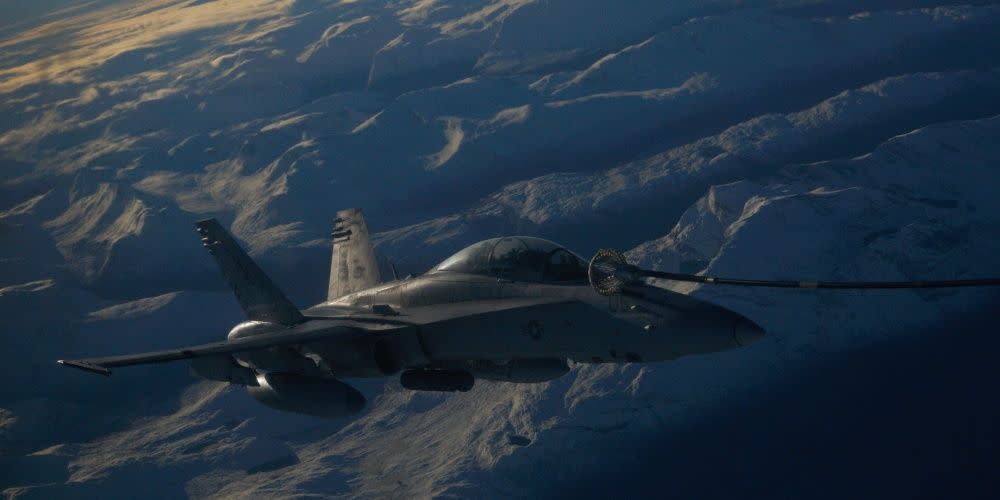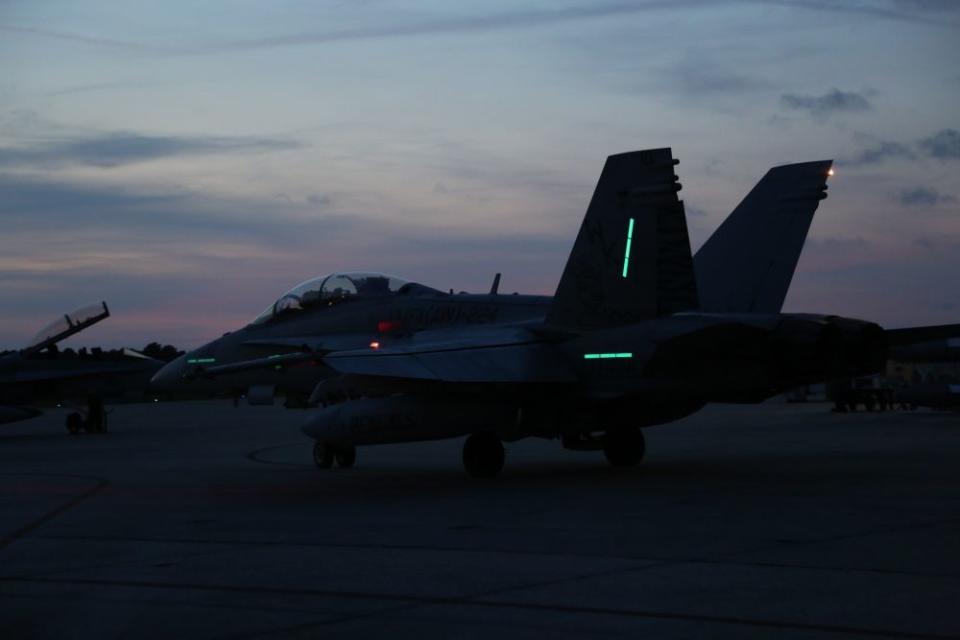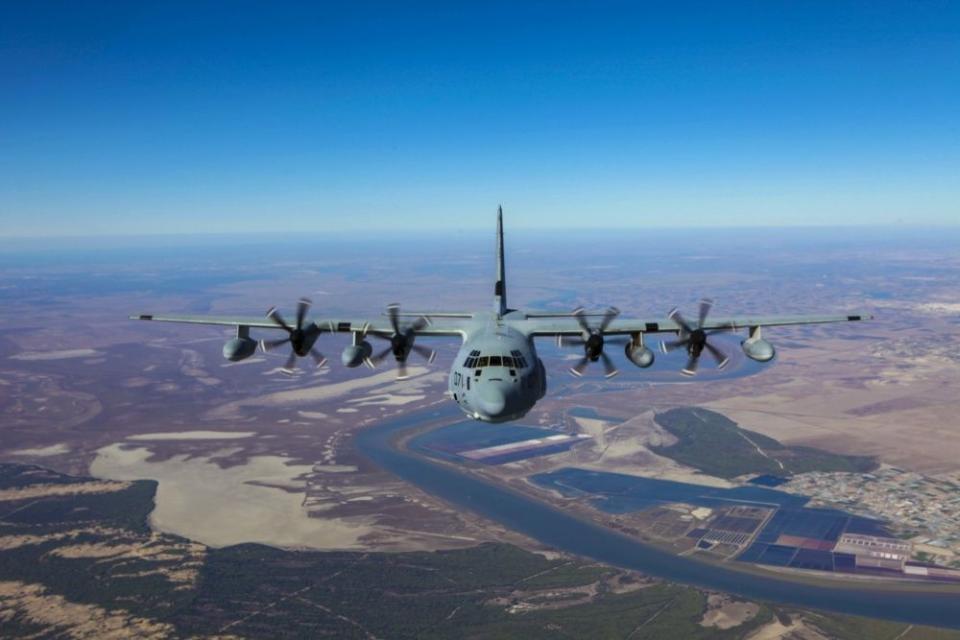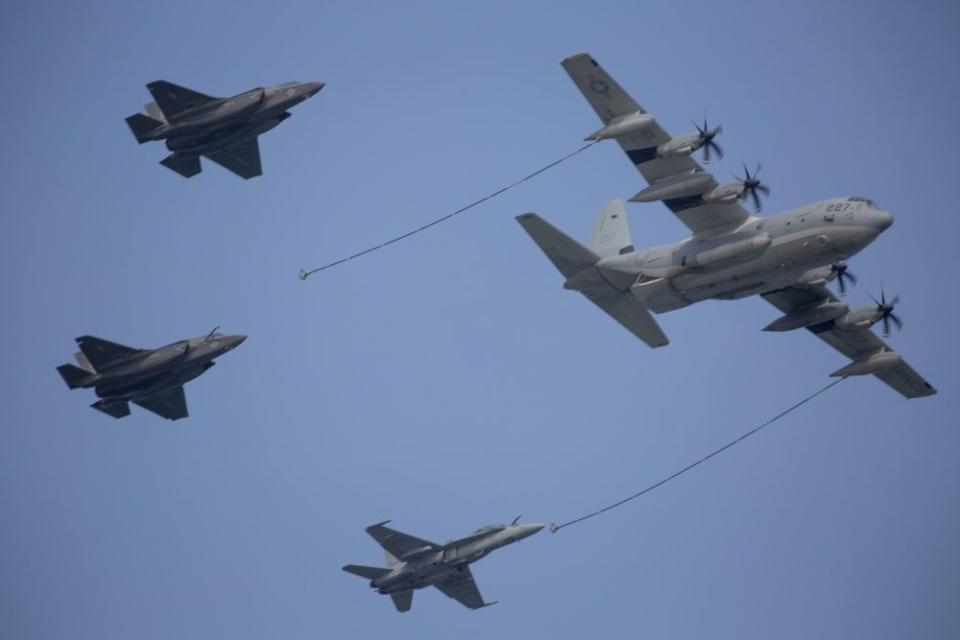U.S. Marines Say a Moment's Confusion Caused the Fatal 2018 Air Collision

The Marine Corps released a report into the 2018 collision between a Marine fighter jet and a midair refueling tanker.
The incident claimed the lives of six Marines.
The collision was apparently the result of a moment's confusion by the fighter pilot, who had been given nonstandard, then contradictory orders.
The U.S. Marine Corps released an official investigation report into a 2018 collision that claimed the lives of six Marines. The accident, which took place off the coast of Japan, involved a F/A-18D Hornet strike fighter attempting to refuel at night from a KC-130 aerial refueling tanker. The report blames collision on a lack of command oversight over operations and training, as well as an “unprofessional command climate.”
The report rules out aircraft malfunction, stating that all aircraft were “fully functional.” The flight data recorder from the F/A-18D was recovered as was the cockpit voice recorder and data recorder from the KC-130J. Investigators relied on information from both as well as numerous interviews to complete the 1,600 page report, released here by U.S. Naval Institute News.
The collision took place off the coast of Japan on the night of December 6, 2018. Two F/A-18D Hornets assigned to Marine All Weather Fighter Attack Squadron 242, otherwise known as VMFA (AW)-242, were practicing nighttime refueling from a KC-130J tanker transport. The F/A-18D is a special Marine-only version of the original Hornet fighter, a twin-seat aircraft that specializes in fighting at night and in bad weather.
The aircraft were refueling under realistic conditions with the pilots wearing night vision goggles to see in the dark. Additionally, the Hornet fighters were flying with navigation lights turned off.

According to the report the two Hornets, call sign PROFANE 11 and PROFANE 12, were flying alongside the tanker, call sign SUMO 41. The three aircraft were flying at 15,000 feet, and it was 1:30 in the morning local time. The two Hornets attached to the tanker to begin refueling, with PROFANE 11 on right side refueling hose and PROFANE 12 on the left hose. After refueling was complete both aircraft were supposed to fly off the KC-130J’s right side. PROFANE 11 completed fueling and detached right, flying off the right wing of the tanker.
PROFANE 11, the formation leader, requested PROFANE 12 fly off the tanker’s left wing after refueling, what the Marine accident investigators are calling a “nonstandard position.” SUMO 41, in charge of the refueling, approved the request. PROFANE 12 completed refueling and PROFANE 11 ordered the pilot to fly off the left side, which again, was not standard procedure.
After PROFANE 12 had completed refueling, SUMO 41 directed the pilot to fly off his right side. PROFANE 11, the formation leader, again requested that PROFANE 12 fly off the tanker’s left side. SUMO 41 approved the request.

Inexperienced in night flying and confused, PROFANE 12 evidently lost situational awareness and moved right instead of left. According to the report, “PROFANE 12 crossed over SUMO 41 from the left to right side, then abruptly corrected back towards SUMO 41 and impacted SUMO 41 in the vicinity of the right side rear jump door.”
The big tanker was badly damaged and was last seen on fire, diving towards the tops of clouds at 12,000 feet.
PROFANE 12’s crew ejected from the damaged Hornet, which had started to pitch and roll. The pilot was lost at sea but the weapon system officer was rescued by a Japanese search and rescue helicopter. All five of SUMO 41’s crew were lost at sea, and the remains of three of the five crewmen were later recovered. PROFANE 11 was not involved in the crash and returned to Marine Corps Air Station Iwakuni in Japan.

The investigation stated that VMFA (AW)-242 suffered from a “command climate of general unprofessionalism and misconduct,” including “prescription drug and alcohol abuse, conduct unbecoming an officer, sexually explicit call signs, orders violations, and failures to follow fundamental principles about professional aviation training and operations.”
Killed in the incident were Lt. Col. Kevin Herrmann, Maj. James Brophy, Staff Sgt. Maximo Flores, Cpl. Daniel Baker, Cpl. William Ross, and Capt. Jahmar Resilard.
You Might Also Like

